Pulsars and Magnetars: The Powerful Rotating Stars That Emit Deadly Beams
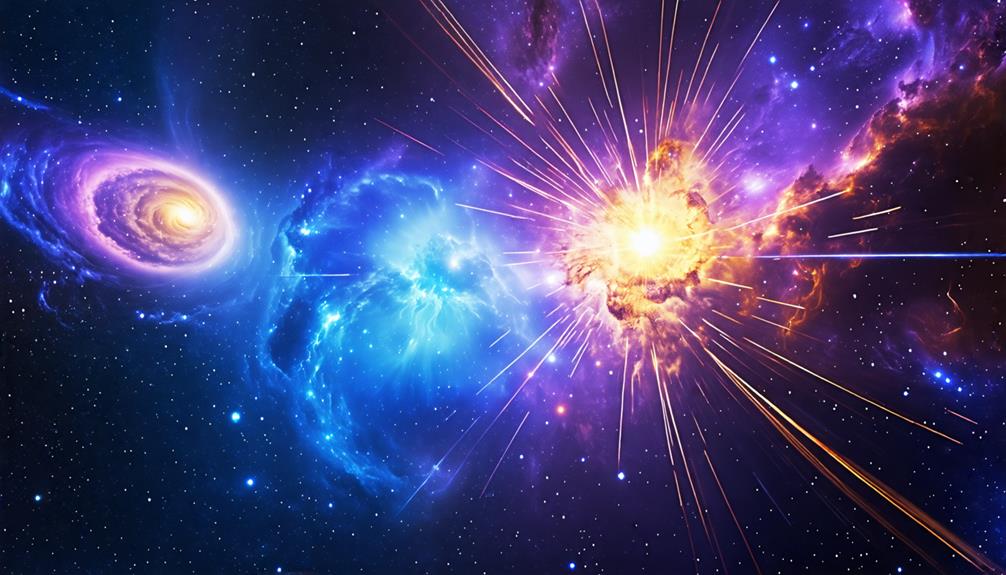
Pulsars and magnetars are extraordinary types of neutron stars that challenge conventional understanding of stellar phenomena. These rapidly rotating stars emit powerful beams of radiation and possess unique properties that provide crucial insights into the universe's complexities. Pulsars, acting as precise cosmic clocks, and magnetars, with their intense magnetic fields, are pivotal in studying gravitational waves and the evolution of cosmic events. Their extreme characteristics and behaviors could significantly enhance our understanding of the universe and our place within it.
Understanding Pulsars
Pulsars are intriguing celestial objects akin to cosmic lighthouses, emitting beams of radiation that produce a rhythmic pulsing effect as they spin. These highly dense neutron stars are remnants of massive stars that have undergone supernova explosions. As pulsars rotate, their powerful magnetic fields direct beams of radiation from their magnetic poles, sweeping across space. When these beams align with our line of sight on Earth, we can detect them as pulses of radio waves.
The rotation rates of pulsars vary significantly. While some rotate once every few seconds, millisecond pulsars can spin at astonishing rates of up to 700 times per second. This rapid rotation makes pulsars incredibly precise cosmic clocks, with emissions accurate to billionths of a nanosecond. Scientists utilize this precision to test theories of gravity and detect gravitational waves. Currently, more than 2,000 pulsars are known, categorized into ordinary pulsars, millisecond pulsars, and binary pulsars based on their rotation rates and emission mechanisms. Studying pulsars enhances our understanding of the universe and the extreme conditions governing these extraordinary stars.
Formation of Pulsars
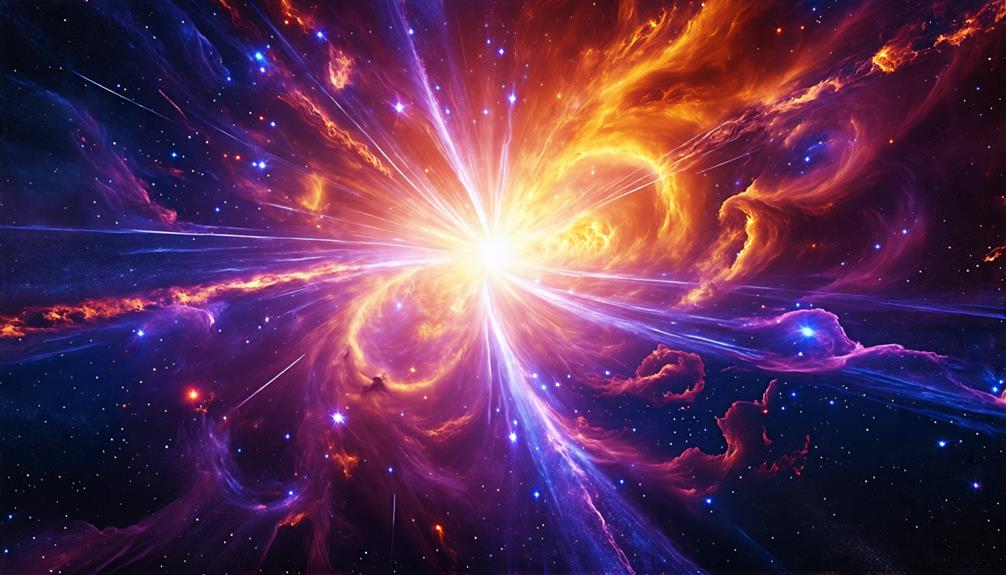
The captivating nature of pulsars originates from their intricate formation process, which starts with the core collapse of massive stars that have exhausted their nuclear fuel. Typically, these stars have masses ranging from 8 to 20 times that of the Sun. When they deplete their energy reserves, they undergo a supernova explosion, ejecting their outer layers and leaving behind an iron-rich core. This core then compresses into a neutron star, resulting in an astronomical object with extraordinary densities.
| Stage of Formation | Description |
|---|---|
| Core Collapse | Massive stars collapse under their own gravity. |
| Supernova Explosion | Outer layers are ejected, leaving behind the core. |
| Neutron Star Formation | The core compresses into an extremely dense neutron star. |
| Pulsar Recycling | Pulsars can gain faster spin rates by accreting material from companion stars. |
A neutron star is composed almost entirely of neutrons, making it incredibly dense—just a teaspoon of its material would weigh around 4 billion tons. Pulsars, a type of rapidly rotating neutron star, have an average lifespan of about 10 million years. Over time, they gradually lose energy and slow down, eventually entering a phase known as the "pulsar graveyard." Some pulsars can undergo a process called recycling, wherein they accrete material from companion stars, thereby increasing their rotation rate and transforming into millisecond pulsars.
This process ensures a fascinating lifecycle, from the violent birth in a supernova to the potential rejuvenation as a millisecond pulsar, making pulsars an intriguing subject of study in astrophysics.
Characteristics of Magnetars
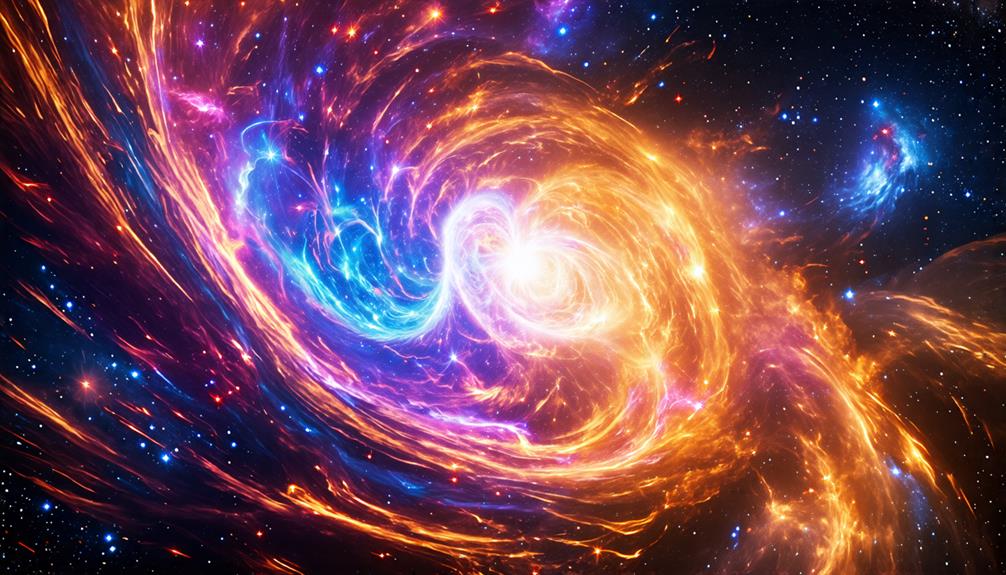
Magnetars are distinguished by their extraordinary magnetic field strength, which can reach up to 10^15 teslas. They are also known for emitting high-energy electromagnetic radiation, including powerful bursts of X-rays and gamma rays. These features not only define magnetars but also make them subjects of significant interest in astrophysics.
Magnetic Field Strength
Magnetars exhibit magnetic field strengths ranging from 10^11 to 10^15 teslas, making them the most powerful magnetic entities known in the universe. These magnetic fields are approximately a trillion times stronger than Earth's, capable of deforming atomic structures even at significant distances. Such deformations can alter atomic chemistry and potentially impact nearby life forms.
The conservation of magnetic flux during a magnetar's formation amplifies its magnetic field strength, contributing to the extraordinary characteristics of these neutron stars. Due to their intense magnetic fields, a mere tablespoon of magnetar material can weigh over 100 million tons, highlighting their extreme density.
Furthermore, magnetars reside in environments that enable the production of high-energy electromagnetic radiation, such as X-rays and gamma rays, resulting from the dynamic processes within these dense stars. Unlike pulsars, which are known for their rotational energy and beams of radiation, magnetars are distinguished by their unparalleled magnetic field strengths, which define their unique nature and behavior in the cosmos.
Electromagnetic Radiation Emissions
Electromagnetic radiation emissions from magnetars are among the most intense and high-energy phenomena in the universe, characterized by bursts of X-rays and gamma rays. These neutron stars, with magnetic fields ranging from 10^11 to 10^15 teslas, produce energy bursts that far exceed the Sun's output. During megaflares, magnetars can release more energy in seconds than the Sun will emit over 100,000 years, showcasing their incredible power.
The high-energy radiation emitted by magnetars is crucial for our understanding of the cosmos. Pulsars, another type of neutron star, also emit electromagnetic radiation, but magnetars do so at a significantly higher intensity due to their unique characteristics. These intense magnetic fields can disrupt electronic information and alter atomic structures in nearby objects, underscoring their immense cosmic influence.
Recently, magnetars have been linked to Fast Radio Bursts (FRBs), with some observations suggesting that these mysterious signals might originate from these powerful stars. As we explore the universe, magnetars continue to reveal the fascinating and complex nature of high-energy astrophysical phenomena.
Discovery of Pulsars and Magnetars
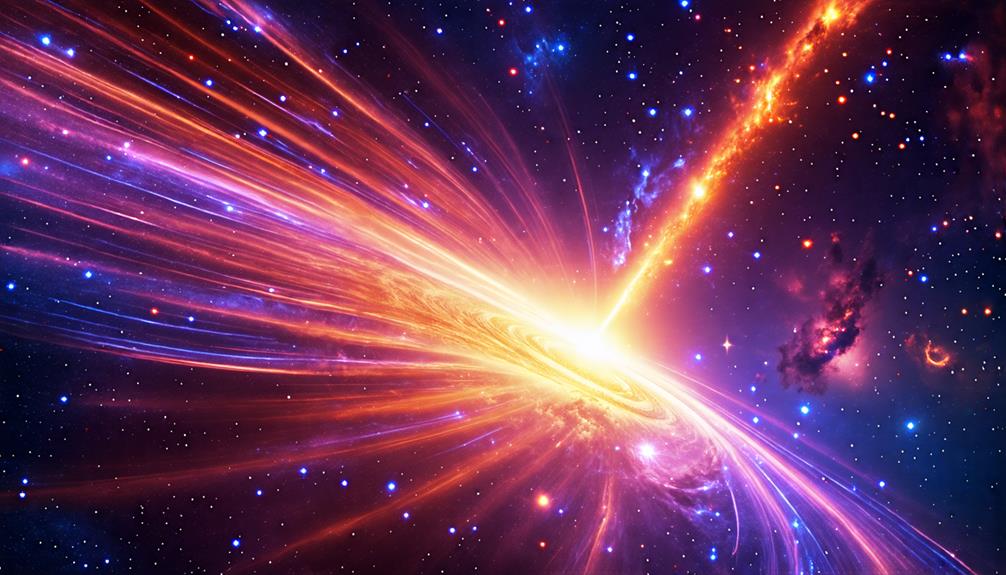
In 1967, astronomers Jocelyn Bell and Antony Hewish made a groundbreaking discovery by detecting the first pulsar, a type of rotating neutron star emitting regular radio signals. This discovery, initially speculated to be extraterrestrial communication, revealed radiation emitted in a precise pattern every 1.33 seconds. This led to the identification of over 2,000 pulsars, known to emit radiation across the electromagnetic spectrum, including radio waves and X-rays.
In 1998, the scientific community's understanding further expanded with the discovery of magnetars, a special type of neutron star with exceptionally strong magnetic fields, far exceeding those of typical pulsars. The first identified magnetar, 1E 1048.1-5937, opened new research avenues in high-energy astrophysics. Magnetars are known for emitting powerful gamma rays and X-rays, with the first observed magnetar megaflare occurring on March 5, 1979.
Significant advancements in understanding both pulsars and magnetars have been facilitated by missions like the Chandra X-ray Observatory, which has identified sources of unique X-ray emissions and provided insights into the complex behavior of these celestial phenomena.
Pulsar Rotation and Speed
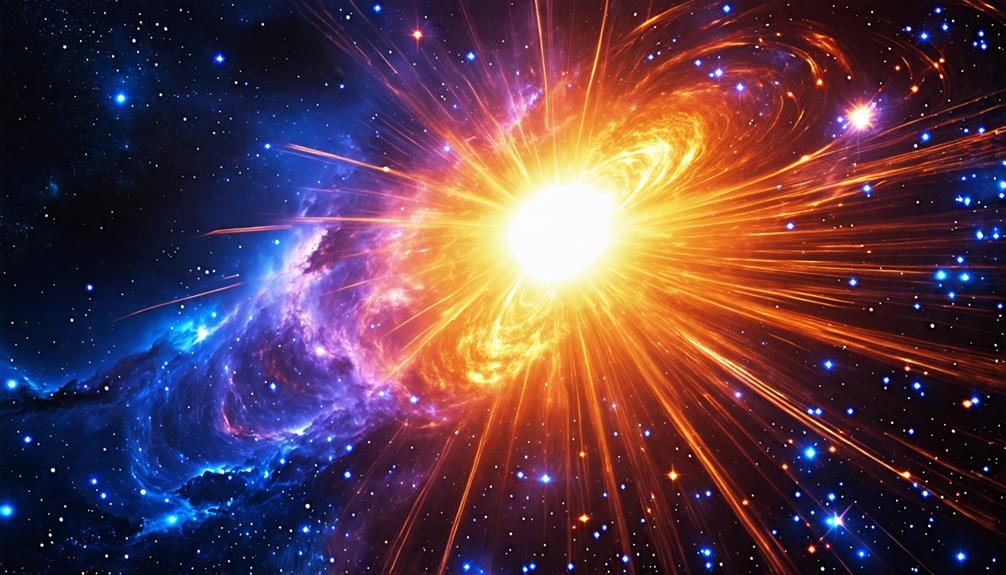
Pulsars spin at astonishing speeds, with some rotating over 700 times per second. This rapid rotation generates powerful beams of radiation that sweep across space, creating the appearance of pulsing as they align with our line of sight. Understanding the mechanics behind pulsar rotation and beam orientation elucidates the behavior of these fascinating celestial objects.
Extreme Rotation Rates
With rotation speeds reaching up to 700 times per second, pulsars, a type of neutron star, are among the fastest spinning objects in the universe. These extreme rotation rates allow pulsars to emit powerful beams of radiation, creating a periodicity similar to a lighthouse sweeping across space. Here are three remarkable facts about pulsars:
- The fastest known pulsar, PSR J1748-2446ad, spins at an astounding 716 Hz.
- The Black Widow pulsar (PSR J0952-0607) rotates at 707 Hz and has a mass of 2.35 solar masses.
- Pulsars serve as precise cosmic clocks, with their timing variations influenced by gravitational waves.
The alignment of their magnetic beams with Earth's line of sight creates the illusion of pulsing, not due to size changes but because of the high speeds at which these neutron stars rotate. Understanding pulsars deepens our knowledge of the universe and highlights their role in the cosmic clockwork.
Pulsar Beam Orientation
The unique orientation of a pulsar's radiation beam, misaligned with its spin axis, creates a mesmerizing lighthouse effect as it sweeps across the cosmos. A pulsar is a highly magnetized neutron star that emits beams of radiation due to its intense magnetic fields. As the pulsar rotates, these beams become visible only when they align with the observer's line of sight, producing the characteristic pulsing effect.
The periodicity of a pulsar's emissions, which can range from milliseconds to seconds, is due to the rotation of the neutron star and the orientation of its beams. The fastest known pulsar, PSR J1748-2446ad, spins at an astonishing 716 rotations per second, serving as a valuable tool for studying phenomena like general relativity and gravitational waves.
Contrary to common misconceptions, pulsars do not pulse due to changes in size; the pulsing effect is primarily a result of the orientation of their radiation beams. Understanding this orientation helps us appreciate the intricate workings of these fascinating celestial objects and their role in our exploration of the universe.
Cosmic Impact of Magnetars
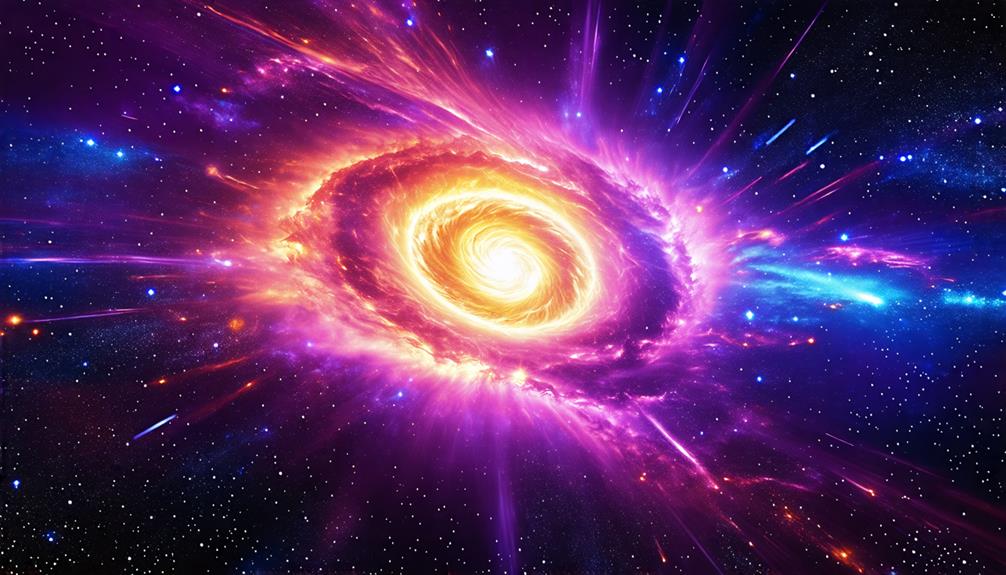
Magnetars exert a significant cosmic impact, influencing stellar evolution and the behavior of matter in extreme magnetic fields. These extraordinary stars emit powerful beams of particles and intense radio signals, reshaping our understanding of the universe. Here are three key aspects of their cosmic influence:
- Supernova Brightness: Magnetars can enhance the brightness of supernovae, significantly affecting galactic formation and evolution.
- Energy Output: Their energy output can vastly exceed that of the Sun, as evidenced by the 2004 hyperflare from SGR 1806-20, which released more energy in 0.1 seconds than the Sun emits in 100,000 years.
- Extreme Magnetic Fields: The extreme magnetic fields of magnetars, exceeding 10^15 teslas, can alter atomic structures up to 1,000 kilometers away.
Future Research Directions
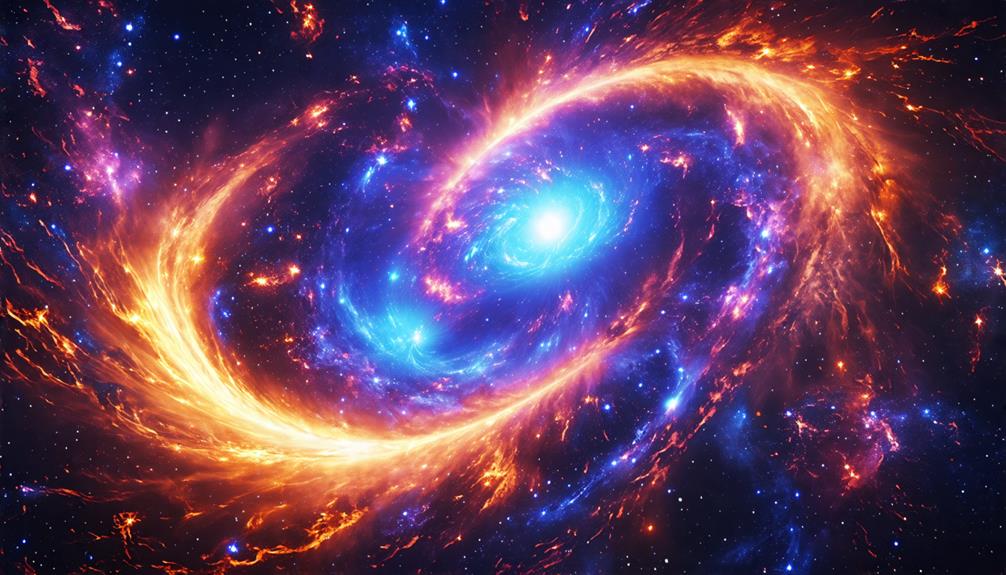
Future research aims to unravel the intricate connections between magnetars and fast radio bursts (FRBs), providing valuable insights into their magnetic fields and behaviors. By delving into this field, researchers will uncover the significant roles these powerful stars play in cosmic evolution and stellar life cycles.
| Research Focus | Key Questions | Expected Outcomes |
|---|---|---|
| Magnetars & FRBs | How do their emissions correlate? | Enhanced understanding of emission behaviors |
| Magnetars & Gamma-Rays | What triggers gamma-ray bursts? | Insights into the mechanisms behind these bursts |
| Cosmic Structures | How do magnetars influence galaxies? | Augmented knowledge of their role in cosmic evolution |
This research will not only deepen our understanding of these enigmatic celestial objects but also enhance our knowledge of the underlying mechanisms driving their behavior, contributing to the broader field of astrophysics.
Conclusion
Pulsars and magnetars are more than just cosmic curiosities; they are pivotal to our understanding of the universe. Their rapid rotations and intense magnetic fields provide insight into the extreme conditions of stellar evolution. By studying these intriguing neutron stars, scientists are uncovering critical information that may unlock secrets about gravitational waves and other cosmic phenomena. As research progresses, these powerful rotating stars continue to enhance our knowledge of the cosmos.




